#sustainable progress
Explore tagged Tumblr posts
Text
The Magic of Street-Side Trees. Beauty, Coolness, and Urban Prosperity.
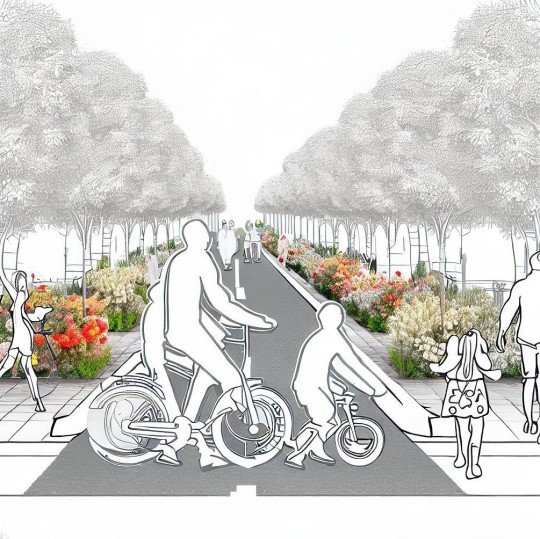
The beauty, coolness, and urban prosperity brought by street-side trees.
Trees lining urban streets are integral elements of the urban landscape, serving multiple ecological roles and socio-economic functions. In general, incorporating trees along the roads in urban areas can elevate the aesthetic appeal, regulate temperatures, and foster prosperity growth. And if our goal is to enhance the role of cities in driving economic growth and fully utilizing human resources, then we must prioritize making tangible improvements to urban environments.

Trees are crucial components for creating appealing and hospitable urban environments that enhance citizens' psychological and social well-being. They play a vital role in reducing air temperature and humidity, which helps alleviate the effects of heat waves and global warming. Trees bear witness to the history, culture, and identity of cities, which they preserve and pass on to future generations. In addition to their undeniable beauty, trees are valuable allies in the fight against climate change.
They provide a range of local benefits that are often ignored beyond the global role of absorbing carbon dioxide. This article aims to increase awareness among readers about the importance of trees for cities and the planet. It seeks to motivate all of us to value, preserve, and protect the urban tree heritage through a participatory and accountable manner that involves citizens and institutions.
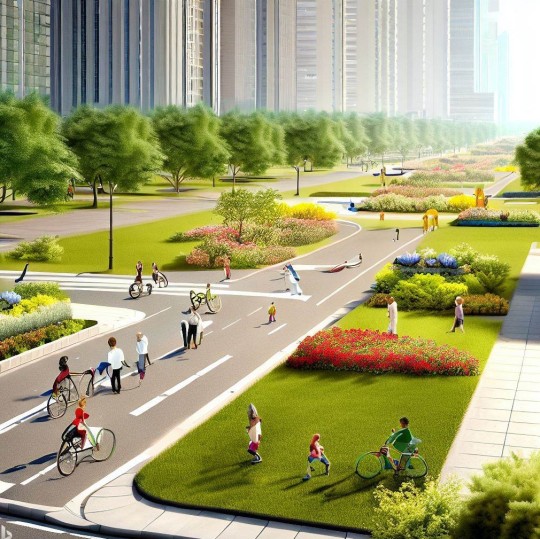
Street-side trees are more than just beautiful to look at. They are an essential resource for cities, providing numerous benefits to residents' health, well-being, and quality of life. In their article on Monocolo, Paolo Massi and Giulia Papaleo highlight the main advantages of trees in urban areas. La magia degli alberi lungo le strade. Bellezza, frescura e prosperità urbana
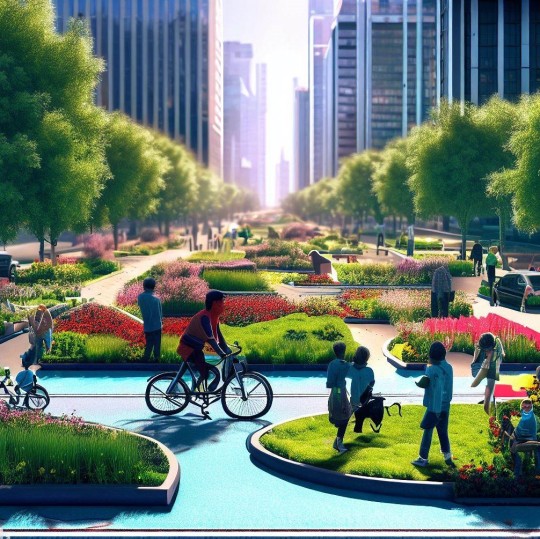
Among the benefits that trees bring to the urban environment, we can mention:
Trees perform ecological, social, and economic functions that contribute to the well-being and development of cities. They help to reduce air pollution by capturing particles, filtering harmful gases, and producing oxygen. Trees also absorb carbon from the atmosphere and store it in their wood, making them beneficial for climate change mitigation. Additionally, trees create shade, cool the air, and reduce energy consumption for cooling buildings. They prevent flooding, improve water quality, and increase biodiversity by providing shelter and food for many species. Trees enhance the urban landscape, mitigate noise, and even increase the value of properties.
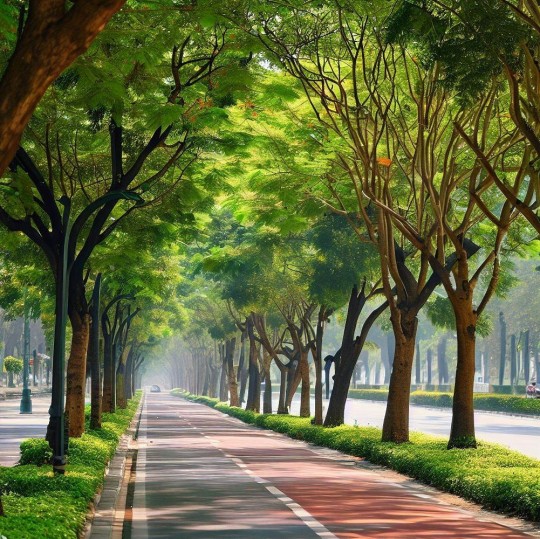
Moreover, they promote physical and mental health by stimulating physical activity, reducing stress, and improving mood and concentration.
Therefore, roadside trees are a valuable resource for cities and their inhabitants. It is critical to protect, care for, and increase them through various means, such as public policies, private actions, and guaranteed maintenance over time, recognizing their fundamental role in the quality of urban life so that maintenance, which develops jobs, in particular, is 'guaranteed' over time,

Urban forestation and eco-neighborhoods.
Urban forestation refers to designing and creating green spaces in urban and peri-urban areas to incorporate nature into the landscape. It is important to both develop new green spaces and enhance existing ones.
Eco-neighborhoods serve as an example of sustainable and livable urban environments. They are designed considering the environment and the health of their residents. Sustainability principles are followed to improve the landscape and economic assets of the urban context. The design of an environmentally sustainable neighborhood aims to reduce its environmental impact during construction, throughout its life cycle, and even during decommissioning while prioritizing the comfort of its residents. These neighborhoods are built to improve people's quality of life by emphasizing energy conservation, renewable energy, environmentally friendly materials, reducing water and waste consumption, and promoting sustainable mobility. They are tangible parts of the city that contribute to the well-being of its inhabitants.
In addition, urban forestation is another example of how urban environments can be made more livable and sustainable. We can seamlessly blend nature into the urban landscape by integrating street trees, gardens, and parks. They represent elements of nature that help purify the air we breathe, capturing pollutants, storing carbon, and mitigating the climate of cities.
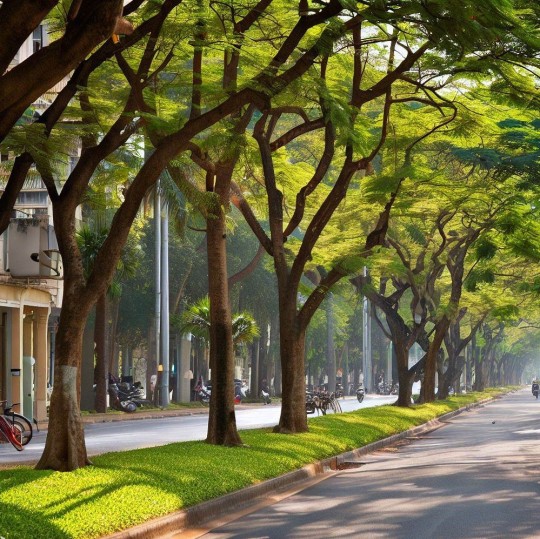
In summary, street-side trees are not just a decorative element but a proper green infrastructure that improves the quality of urban life. Therefore, It is vital to encourage planting, caring for, and preserving trees in urban areas, with the participation of government institutions, businesses, and residents, in order to achieve a shared vision to promote sustainable progress.
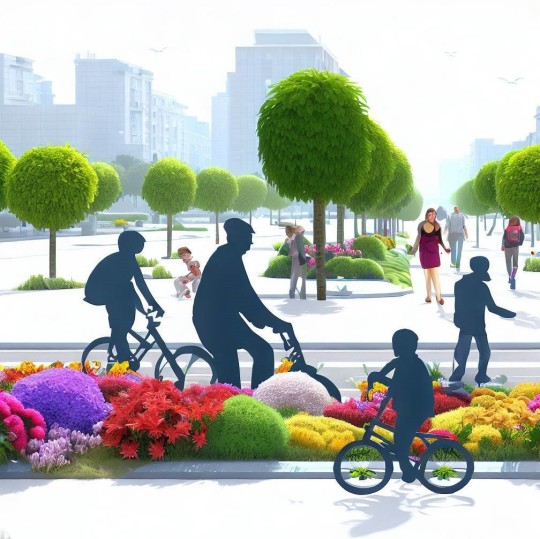
🟠 Italiano
Intro
Gli alberi sono elementi essenziali per creare paesaggi urbani attraenti e accoglienti, che favoriscono il benessere psicologico e sociale dei cittadini. contribuiscono a ridurre la temperatura e l'umidità dell'aria, mitigando gli effetti delle ondate di calore e del riscaldamento globale. Essi sono testimoni della storia, della cultura e dell'identità delle città, che conservano e trasmettono alle generazioni future. Alleati nella lotta ai cambiamenti climatici, oltre alla loro innegabile bellezza offrono una serie di benefici locali che spesso tendiamo a trascurare (al di là dei benefici globali di assorbimento dell’anidride carbonica). Questo articolo quindi ha lo scopo di sensibilizzare i lettori sull'importanza degli alberi per le città e per il pianeta, invitandoli a conoscere, apprezzare e tutelare il patrimonio arboreo urbano coinvolgendo i cittadini e le istituzioni in un processo partecipativo e responsabile.
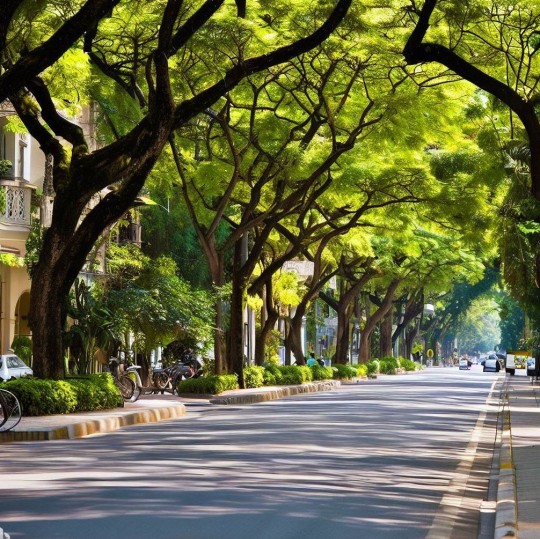
La magia degli alberi lungo le strade. Bellezza, frescura e prosperità urbana.
Gli alberi sono una risorsa preziosa per le città, non solo per il loro contributo alla mitigazione dei cambiamenti climatici, ma anche per i molteplici benefici che apportano alla salute, al benessere e alla qualità della vita dei cittadini. In questo articolo del Monocolo gli autori Paolo Massi e Giulia Papaleo, vogliono illustrare alcuni dei principali vantaggi che gli alberi offrono alle aree urbane e alle persone che le abitano. La magia degli alberi lungo le strade. Bellezza, frescura e prosperità urbana
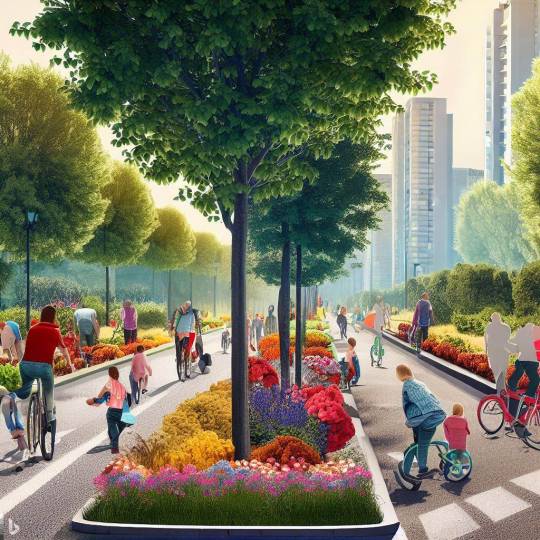
La magia degli alberi lungo le strade dunque non si limita alla loro estetica. Gli alberi sono elementi essenziali per il benessere e lo sviluppo delle città, in quanto svolgono funzioni ecologiche, sociali ed economiche. Tra i vantaggi che gli alberi apportano all'ambiente urbano, possiamo citare:
Riduzione dell'inquinamento atmosferico: gli alberi catturano le particelle sospese nell'aria, filtrano i gas nocivi e producono ossigeno.
Mitigazione del cambiamento climatico: gli alberi assorbono il carbonio dall'atmosfera e lo immagazzinano nel loro legno, contribuendo a ridurre l'effetto serra.
Regolazione termica: gli alberi creano ombra e rinfrescano l'aria attraverso la traspirazione, diminuendo la temperatura e il consumo energetico per il raffreddamento degli edifici.
Conservazione del suolo e dell'acqua: gli alberi riducono l'erosione del suolo, aumentano la sua capacità di infiltrazione e ritardano il deflusso delle acque piovane, prevenendo le inondazioni e migliorando la qualità dell'acqua.
Incremento della biodiversità: gli alberi offrono rifugio e cibo a molte specie animali e vegetali, arricchendo la diversità biologica delle città.
Valorizzazione del paesaggio urbano: gli alberi creano scenari naturali, armonizzano l'architettura, attenuano il rumore e aumentano il valore immobiliare delle proprietà.
Promozione della salute e del benessere umano: gli alberi favoriscono la salute fisica e mentale delle persone, stimolando l'attività fisica, riducendo lo stress, migliorando l'umore e la concentrazione.
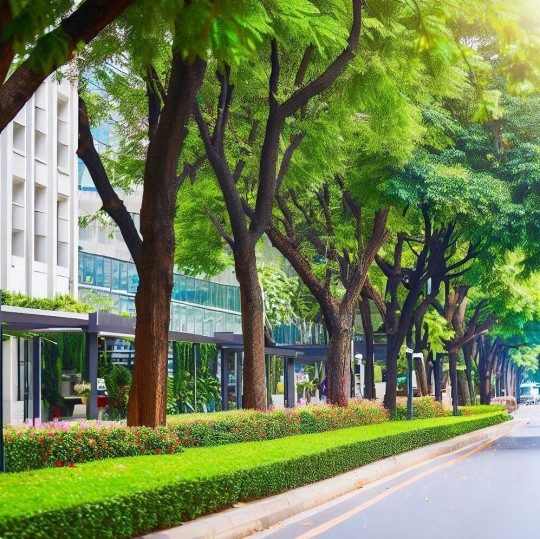
Gli alberi e le aiuole a verde lungo le strade sono quindi una risorsa preziosa per le città e i loro abitanti. Per questo motivo, è importante proteggerli, curarli e incrementarli, attraverso politiche pubbliche e azioni private che ne riconoscano il ruolo fondamentale per la qualità della vita urbana affinché la manutenzione, che sviluppa posti di lavoro, in particolare venga 'garantita' nel tempo.
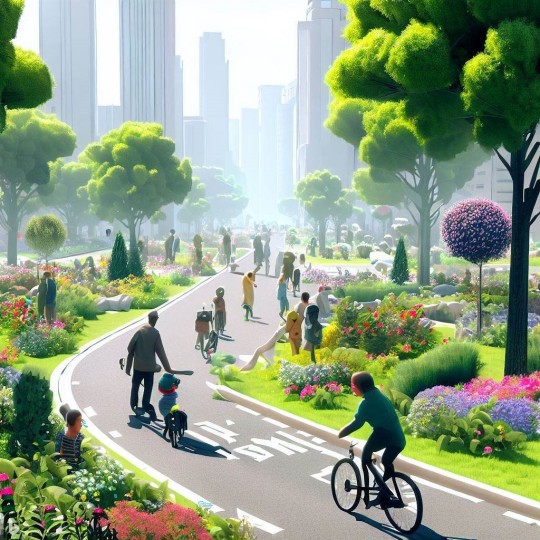
La forestazione urbana e gli ecoquartieri
Con il termine forestazione urbana si intende la progettazione e lo sviluppo di aree verdi urbane e periurbane, facendo della natura un'importante protagonista di questo paesaggio. Chiaramente è importante non solo progettare e sviluppare nuove aree verdi, ma anche rivalorizzare e riappropriarsi di quelle esistenti.
Certo! Gli ecoquartieri sono un esempio di ambienti urbani sostenibili e vivibili. Sono quartieri costruiti nel rispetto dell’equilibrio ambientale e della salute delle persone che vi abitano. Sono conformi ai principi della sostenibilità e puntano alla valorizzazione del patrimonio paesaggistico ed economico del contesto urbano in cui sono inseriti. La progettazione di un quartiere ecosostenibile punta a ridurne l’impatto ambientale: dalla fase di costruzione, al ciclo di vita, fino alla sua dismissione, senza mai dimenticare il comfort di chi lo vive. Si tratta di vere e proprie porzioni di città edificate con l’obiettivo di innalzare il livello di qualità della vita e sono realizzate ponendo l’accento su: risparmio energetico; uso delle energie rinnovabili e di materiale ecologico; riduzione del consumo di acqua e di rifiuti; promozione della mobilità sostenibile.
Inoltre, la forestazione urbana è un altro esempio di come gli ambienti urbani possono essere resi più vivibili e sostenibili. Le alberature stradali, i giardini e i parchi urbani rappresentano degli elementi di natura che contribuiscono a purificare l’aria che respiriamo, catturando sostanze inquinanti, immagazzinando carbonio e mitigando il clima delle città.
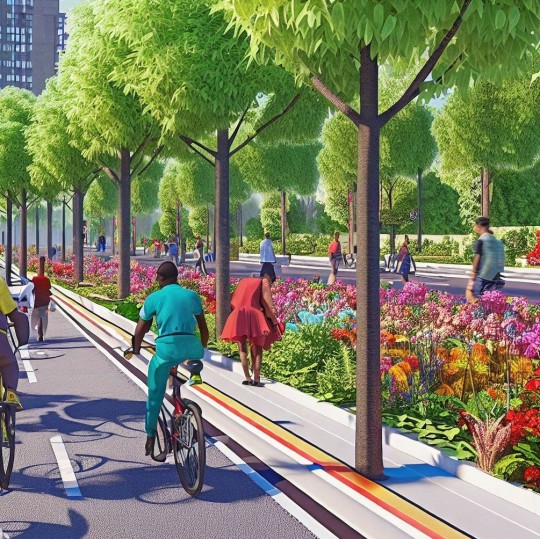
Come si può notare, gli alberi lungo le strade non sono solo un elemento decorativo, ma una vera e propria infrastruttura verde che migliora la qualità della vita urbana. Per questo motivo, è importante promuovere la piantumazione, la manutenzione e la protezione degli alberi nelle città, coinvolgendo le amministrazioni pubbliche, le imprese e i cittadini in una visione condivisa di sviluppo sostenibile.
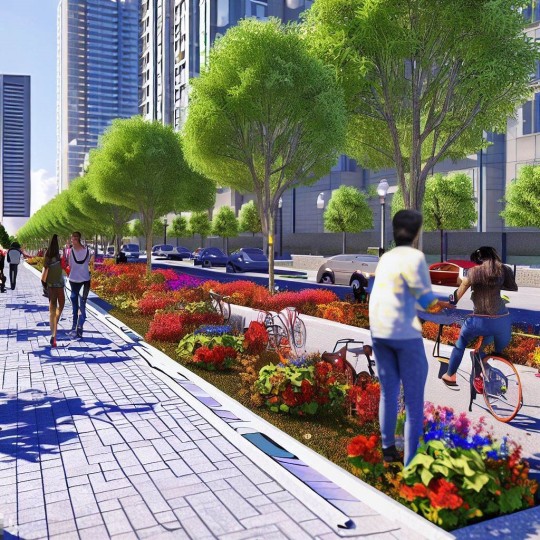
images created by The Board Behind © 2023
More related topics on this matter you might like:
Landscape Architecture: self-reflection on improving and enhancing our cities' run-down suburbs. English /Italian
Give color to the city to celebrate the joy of living.
I appreciate your kind presence and attention on this matter. Thank you for joining us today.
⏩ The Board Behind
#the board behind#sviluppo sostenibile#urban environments#urban tree heritage#ecological restoration#social growth#economic growth#city development#well being#urban living#urban life#heat wave#heat islands#sustainable progress#social innovation
17 notes
·
View notes
Text
despite the chaos of daily life, i'm realizing just how few rules there are to everything. just the ones i arbitrarily put on myself. genuinely considering 1) uploading on soundcloud more. 2) doing more covers (i want to work my voice! :D) 3) there's no 3! i'm not gonna set a bar too high for myself.
0 notes
Link
In a world that thrives on connections, the push for economic growth is more important than ever, but it's not as simple as it seems. Countries are exploring creative ways to foster sustainable progress and lift living standards for everyone.
From investing in education to cultivate skilled workers, to supporting the entrepreneurial spirit of small businesses, and modernizing infrastructure, the strategies are diverse. Innovation is key, with a strong focus on tech advancements driving competitiveness. Plus, ensuring that growth benefits all segments of society is crucial for stability.
By embracing global trade and smart tax policies, nations can not only grow economically but also create a vibrant ecosystem where everyone has a chance to succeed. The path to prosperity is complex, but with the right strategies, we can build a future that uplifts us all.
Want to dive deeper into investment insights? Sign Up to the free newsletter here www.investmentrarities.com.
#economic growth#sustainable progress#global trade#education investment#entrepreneurship#infrastructure development#tech innovation#competitiveness#tax policy#social equity#small business support#future prosperity#economic development#investing#wealth distribution
0 notes
Text

José Alberto "Pepe" Mujica Cordano (20 May 1935 – 13 May 2025)
Mr Mujica Cordano was an Uruguayan politician, revolutionary and farmer who served as the 40th president of Uruguay from 2010 to 2015.
He was a former guerrilla with the Tupamaros and was tortured and imprisoned for 14 years during the military dictatorship in the 1970s and 1980s.
"Pepe" was a member of the Broad Front coalition of left-wing parties, Mujica was Minister of Livestock, Agriculture and Fisheries from 2005 to 2008 and a Senator afterwards.
As the candidate of the Broad Front, he won the 2009 presidential election and took office as president on 1 March 2010.
Mr Mujica had been described as "the world's poorest president" due to his austere lifestyle and his donation of around 90 percent of his US$12,000 monthly salary to charities that benefit poor people and small entrepreneurs.
An outspoken critic of capitalism's focus on stockpiling material possessions which do not contribute to human happiness.
In June 2012, Mr Mujica's government legalize state-controlled sales of marijuana in Uruguay in order to fight drug-related crimes and health issues, and stated that global leaders would be asked to do the same.
Mr Mujica said that by regulating Uruguay's estimated US$40 million-a-year marijuana business, the state would take it away from drug traffickers and weaken the drug cartels. The state would also be able to keep track of all marijuana consumers in the country and provide treatment to the most serious abusers, much like the treatment afforded to alcoholics.
Mr Mujica also passed a same-sex marriage law and legalized abortion.
In September 2013, Mujica addressed the United Nations General Assembly's 68th session, with a long speech devoted to humanity and globalization.The speech called on the international community to strengthen efforts to preserve the planet for future generations and highlighted the power of the financial systems and the impact of economic fallout on ordinary people.
He urged a return to simplicity, with lives founded on human relationships, love, friendship, adventure, solidarity and family, instead of lives shackled to the economy and the markets.
The share of social expenditure in total public expenditure thus rose from 60.9% to 75.5% between 2004 and 2013. During this period, the unemployment rate remained at about 7%, the national poverty rate was reduced from 18% to 9.7% and the minimum wage was raised from 4,800 pesos to 10,000 pesos (average annual inflation rate of 7%).
It also supported the strengthening of trade unions. According to the International Trade Union Confederation, Uruguay became the most advanced country in the Americas in terms of respect for "fundamental labor rights, in particular freedom of association, the right to collective bargaining and the right to strike".
"You have inspired millions of people, encouraging them to do their bit for a better world."
Thank you and Rest In Power !
#human rights#humanity#equal rights#freedom#democracynow#peace#dictatorship#uruguay#labor rights#women's rights#legalize marijuana#legalize weed#legalize cannabis#humanist#sustainability#ecology#rip#josé Cordano#josé mujica#revolución#revolução#revolution#abortion#same sex marriage#progressive politics#political#icone#legend#enlightened#modernity
77 notes
·
View notes
Text
my mother (jokingly) called me a tradwife the other day because I asked for fiber arts stuff for Christmas 😅 we then had to explain to my dad what a tradwife is.
but seriously, it is crazy to me that there are two parallel movements of young people doing crafts, making their own food/clothing, and pushing for more sustainable lifestyle. But one movement is assigning religious meaning to it and also advocating for a return to “conservative family values” while the other movement is very progressive and doing it for a more environmentally friendly way of living. We’re a weird generation, fellow gen z’s
#tradwife#sustainability#Fiber arts#crafts#homemaking#slow living#eco friendly#gen z#Progressive#just to be clear I am not a tradwife#I am the other side of the movement
42 notes
·
View notes
Text
I finally tried darning!
It's not terrific, but it's a perfect learning project--the bottom of my kid's hand-me-down pajama feet.
I sewed a layer of felt sandwiched between two layers of cotton to the inside of the sole to patch it and provide some cushion, so the darning is just to add longevity to the original outer layer.
I still have a few more spots to do:

But I'm happy for the learning opportunity and to make otherwise great clothes last through another child!
29 notes
·
View notes
Text
On the upside I’ve been writing a lot more lately because I’ve been at that level of tired where I get less stuck on constantly editing and can actually make more progress
on the downside, I’m tired
12 notes
·
View notes
Text
thought it's about time I poked my head out of the mire, and confirm that this period of silence just seems to be a part of my process. I can't wait to show you what I am working on. It has taken on a life of its own. It's beautiful and untamed like a wild horse. So much has and is changing. I love it to pieces. !!
#I hope you are taking care of yourselves too!!! I can't wait for tumblr brainrot to take hold again >:3#a rough est: I wouldn't expect The Drop until the 2nd anniversary in march- it seems fitting for a mighty metamorphosis such as this :>#but truly anything could happen- I just want to give myself enough time. learning something new is always slow at the start! and the middle#and at the end. But then!#thank you for all the asks and encouragement<3 you sustain me through tough times. *blows a kiss into the sky* for u#OUROBOROS#ouroboros if#ouroboros-if#interactive fiction#twine game#twine wip#progress update#if you /are/ thirsty for more ouro stuffs come visit our home on discord<3 or take a peep on patreon mayhaps!
201 notes
·
View notes
Text
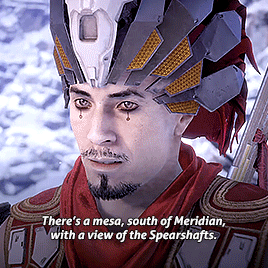
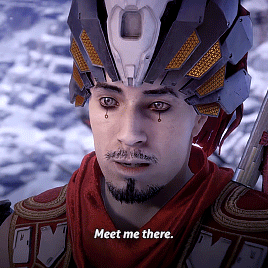


nil + rendezvous
Horizon Zero Dawn (2017) | Horizon Forbidden West (2022)
#nil horizon#niloy#horizon forbidden west#horizon zero dawn#hfw#hzd#hfwedit#captions hard but it's about the growth. it's about the way he has a special spot in mind and an... activity in mind.#and in hfw instead of a duel to the death we are riding the edge of life and death. a dance that holds death close at the perfect distance#repeatable and therefore perpetual. they can race again and again. death is a one time thing.* before bringing up the mesa he mourns#the loss of bandits to kill and seems to not see any further... reason to be alive. he will not kill innocents. he invites aloy to the mesa#with the intention of dying by her hand. because she is his partner. his equal. instead she spares him.#saying she doesn't think he has a death wish and that she sees there's a need for him in the world. that is. an earth shattering#thing to hear. it's no wonder he feels restless after the battle of meridian. aloy has disappeared so there really isn't anything left for#him in the east (not yet anyway. i have thoughts about post-hfw progressions but i digress). he has a reason to stay alive (aloy)#but not a purpose. certainly nothing to fulfill his thrill-seeking itch. so he heads west. and finds the racers.#*he mentions wishing he could kill bandits more than once as well. he wishes for repeatability. sustainability. bc there is so much going o#in his head and i think killing soothed it to an extent. but also perpetuated the issue obviously. racing soothes his demons without the#negative repercussions..... i think i am done now
120 notes
·
View notes
Text
writing is easy there's nothing to it it's just making a very very very very long series of decisions and eventually the decisions accumulate into a story. if i make just five decisions a day i could have my book done in a mere thirty thousand years
#help.#cry for help number one my story keeps trying to turn into a book whenever my back is turned#cry for help number two i Am making sustainable progress but i fear i might be here forever
8 notes
·
View notes
Note
Wonderful blog! Have you read the book Factfulness by Hans Rosling? It's from 2017 so the diagrams in it are a bit outdated, however there's the site Gapminder that he founded that keeps up to date. It's about using statistics to prove that things DO improve over time, and also how to process the constant influx of bad news and put it into perspective.
Thank you!
I have not heard of it, but it sounds extremely up my alley!
The book is here, for anyone else who wants to check it out!
84 notes
·
View notes
Text
The Philosophy of Economic Development
Economic development refers to the process through which a country or region improves its economic, social, and political well-being. It goes beyond mere economic growth, focusing on broader improvements such as quality of life, equitable access to resources, and sustainability. The philosophy of economic development involves the exploration of values, principles, and strategies that guide efforts to elevate living standards, reduce inequality, and promote social justice.
Core Principles of Economic Development
Human Well-being and Quality of Life Economic development is not just about increasing wealth, but improving the overall quality of life. This involves not only economic metrics like income and employment but also health, education, access to basic services, and environmental sustainability.
Sustainability Sustainable economic development ensures that current growth does not come at the expense of future generations. This encompasses responsible resource management, environmental protection, and long-term social stability.
Equity and Inclusiveness Development should aim to reduce inequality, ensuring that the benefits of growth are shared equitably among all segments of society. This often includes addressing poverty, gender inequality, and regional disparities.
Freedom and Empowerment The philosophy of economic development values individuals’ freedom to choose their path in life. This involves creating an environment where people can access opportunities, make decisions, and have control over their economic futures.
Participation and Democracy Genuine development is participatory and involves empowering local communities. Democratic governance structures enable people to take part in the decisions that affect their lives, ensuring that development initiatives reflect local needs and aspirations.
Philosophical Approaches to Economic Development
Neoliberalism Neoliberal thinkers advocate for minimal state intervention in the economy, believing that market forces, competition, and private enterprise lead to more efficient allocation of resources. They argue that deregulation, privatization, and free trade stimulate economic growth and improve living standards.
Structuralism Structuralist approaches, rooted in the works of economists like Raul Prebisch, argue that development requires transforming the economic structure of a society. This may involve diversifying economies away from primary exports and fostering industrialization, technology, and education. Structuralism also advocates for addressing historical inequalities between developed and developing nations.
Dependency Theory Dependency theory critiques the global economic system, arguing that poorer nations remain economically dependent on wealthier ones. It asserts that economic development cannot occur without addressing global inequality and suggests that developing countries should resist exploitative international systems and focus on self-sufficiency.
Capabilities Approach Developed by philosophers like Amartya Sen and Martha Nussbaum, the capabilities approach focuses on expanding individuals' abilities to achieve their well-being. Development is seen not just as economic output but as the expansion of freedoms, opportunities, and capacities to lead a fulfilling life.
Human Development and Well-being Human development, as championed by the United Nations Development Programme (UNDP), emphasizes improving people’s lives through access to health, education, and economic opportunities. It expands the concept of development beyond GDP growth, focusing on broader human development indicators.
Ethical Considerations in Economic Development
Justice and Fairness Economic development often raises ethical questions about fairness and justice. How do we ensure that the fruits of development reach the most marginalized? Are the benefits of growth distributed equitably?
Cultural Sensitivity Globalization and development may clash with local traditions and ways of life. How can development policies respect cultural diversity while promoting progress?
Environmental Responsibility The growth that drives economic development can often harm the environment. Ethical economic development seeks to balance economic success with ecological sustainability, protecting ecosystems and promoting green technology.
Rights-Based Development Some philosophies assert that economic development should be driven by respect for human rights, focusing on the right to work, access to education, the right to food, and social security. Rights-based frameworks aim to ensure that development benefits all people, particularly the most disadvantaged.
Challenges and Criticisms
Economic Inequality While economic development can lead to prosperity, it often exacerbates social inequality. The gap between the rich and poor, both within nations and globally, remains a persistent challenge in achieving truly inclusive development.
Sustainability Issues Rapid economic development can result in environmental degradation, depletion of natural resources, and long-term ecological damage. The challenge lies in balancing immediate economic gains with the need for environmental stewardship.
Cultural Imperialism Economic development often brings Western-style capitalism, technology, and values into non-Western societies, leading to criticisms of cultural imperialism. These critiques question whether true development is possible without compromising cultural identity.
Political Corruption and Mismanagement In many countries, political corruption, ineffective governance, and the lack of infrastructure can hinder the success of economic development initiatives. Ensuring transparent, accountable leadership is essential for sustainable progress.
Conclusion
The philosophy of economic development encompasses diverse theories and practices aimed at improving the well-being of individuals and societies. At its core, it recognizes that economic growth is not an end in itself but a means to greater human flourishing. By addressing the ethical, social, and environmental dimensions of development, philosophers and policymakers alike strive to create an equitable, just, and sustainable future for all.
#philosophy#epistemology#knowledge#learning#education#chatgpt#economics#Economic Development#Development Philosophy#Philosophy Of Economics#Economic Justice#Global Development#Sustainable Growth#Moral Economy#Socioeconomic Ethics#Growth And Ethics#Development Theory#Human Development#Equity And Economics#Philosophy Of Progress#Political Economy#Economic Ethics
2 notes
·
View notes
Text

Something I’ve been trying to do this past year is spent money on experiences and making gifts versus buying gifts. This past Sunday I took a pottery class as a way to try and have a communal experience with my son who is a great a the pottery wheel and found myself so terrible at it. Part of what I am learning to do as part of doing more sustainable actions is having a laugh at myself when I fail things. Trying and learning doesn't always mean doing amazing at them, it means giving things a go and being happy you tried something. So this, this is my attempt at trying something and not doing well. Hopefully it's a great reminder that going zero waste is a journey and not something I can pick up in a week.
#sustainability#sustainable#minimalism#minimalist#zero waste#get you a budget#trying new things#having a good laugh at myself#imperfect means progress
2 notes
·
View notes
Text
tbh I am still a bit afraid of overhead squats . my wrists ...
#my ohp also doesnt progress very quick s its a little hard to get and sustain true weight over me on these#m
5 notes
·
View notes
Text
Thought I might start posting about the winter coat I'm making. In February, in Aotearoa New Zealand. Cuz obviously this is the project to be working on sweating like mad, listening to the musical stylings of an orchestra of cicadas.

I basically started this project to challenge myself with pattern matching and the thickness of this wool fabric (thick but loosely woven, hence the interlining and lining)
My mum called it a Tino Rangatiratanga coat. I didn't see it til she said it, and now I'll never see anything else.

Look at that alignment. This is hand tacked, I'll eventually machine sew it on - this step was supposed to be for pattern matching but I'm showing off because pretty pleased with it.
Side note, I know the diagonals go opposite ways on these front pockets. Twas intentional. I'm having fun.


Lining, and a picture showing the interlining basted onto the sleeve. Lining is fraying like nobody's business, hence why I overlocked all the edges
I haaaaated sewing in that label at this time when it's devastatingly, spectacularly not finished. If this project wasn't already cursed AF this would have jinxed it. But if it was the last step I took, it wouldn't be so nice and easy to stitch down! It's an end fold label! (by Kylie and the machine btw)
I'm not naming the pattern because I don't hold with it. Shell fabric is 100% wool, from the fabric store. interlining is scavenged, mostly from a poncho my mum gave me 15 years ago; made of possum wool which has fallen to the moths. The lining is stash, 100% synthetic - but hey, this garment won't be being washed. No micro plastics, no problems!
#sewing#work in progress#Tino Rangatiratanga coat#The most sustainable fabric is the one already in your stash not getting used for a gosh darned decade
3 notes
·
View notes